As an entrepreneur or small business owner, app store optimization (ASO) may be the 987th thing on your to-do list.
Makes sense, given that you’re the captain of the ship, while also being the chef, engineer and deckhand.
But if you’re building an app, ASO isn’t something you can afford to shelve. Especially when you consider that there are nearly2 million apps on the Apple App Store and around 3.5 million apps on the Google Play Store.
Without ASO, your app will be listed so low on your chosen app store, potential customers will need a microscope to discover it. No matter your app monetization model, you can’t get ROI on your app if it doesn’t rank high on app stores.
However, with ASO, your app will soar to the top of the rankings, helping you secure a hatful of organic downloads. The revenue you get from there on in is the difference between your business surviving and thriving.
In this guide, we’ll run you through the basics of ASO before sharing best practices from the top ASO experts on the web.
Either scroll or flick through by using the menu 👇
What is app store optimization?
ASO is a technique that allows app owners to maximise their visibility on major app stores like Google Play Store and the Apple App Store. By including targeted metadata like keywords, screenshots and videos in your listings and securing positive ratings and reviews, you can rank high on these platforms.
With high rankings, you’ll improve the visibility of your brand and the amount of downloads you secure, which opens up the door to you generating revenue through your app. After all, the more users you have, the better your chances of succeeding with monetization models like in-app purchases (IAP) and in-app advertising (IAA).
How is ASO different from SEO?
SEO | ASO | |
Goal | Increase website traffic | |
Search Engine | Google, Bing | Apple App Store, Google Play Store |
On-page factors |
|
|
Off-page factors |
|
|
While many compare ASO to search engine optimization (SEO), it’s also important to distinguish the two.
Where ASO is used for increasing the ranking and visibility in app stores for apps, SEO is used for optimizing websites for search engines like Google and Bing.
However, the main difference between ASO and SEO lies in the ranking factors.
ASO primarily focuses on factors that work within the App Stores, like the app’s title, description, keywords, app icons, screenshots, user ratings and reviews. Whereas, SEO focuses on factors like meta titles and tags, backlinks, internal links, site speed, content and many other factors.
Additionally, both ASO and SEO have different goals. Where ASO’s goal is to increase app downloads, SEO’s goal is to increase visitors to a website.
Holly Lawton, Sales and Marketing Head at document scanning service provider, Pearl Scan, explains:
“The main similarity I've found between SEO and ASO is that reviews are a crucial ranking factor in ASO, rather than one of many factors in a search engine-optimized page,” Holly says.
“For example, where you'd have a product schema on an ecommerce page for SEO purposes, you also need a sizeable amount of reviews on any app listing for both social proof and trust signals for the visitor.
“Where I'd say ASO differs is that it's much more reliant on the types of factors you can control. For example, SEO is often reliant on external factors such as link building and page speed linked to a certain CMS. Whereas for ASO, this isn't really the case.
“It's more about focusing on the value of your content, how it's presented and aspects such as imagery and reviews that truly matter with ASO.
“We've found greater success by focusing on what the user expects to see from a review, imagery and content perspective and not trying to 'game' any app store platform into what we think it wants to see.”
How does ASO work?
According to a study, almost 70% of people use the search function to find a new app.
And if your app is optimized, it’ll show up in the search results. The higher your app ranks in search results, the more likely it is to be noticed and downloaded by your potential users. This is because users typically focus on the top few results.
Think of ASO as a powerful tool that works for your app growth and delivers long-term results.
Why is app store optimization important?
We hinted about the importance of ASO in the introduction, but there are many more reasons why your company should be doing it.
1 - ASO is affordable
As an app owner, you understand the importance of low cost per install, especially in startup mode, when budgets are tight.
ASO is a cost-effective strategy compared to other app marketing strategies like pay-per-click campaigns, influencer marketing and events. Plus, it can all be done in-house.
Simply put, ASO increases your visibility while keeping your user acquisition costs low.
2 - App stores are saturated
Thousands of apps are launched every day, adding to the millions of apps already live on the app stores. In February 2024 alone, 52,000 apps were released through Google Play Store.
This makes it challenging for your app to stand out from the competition and get noticed by your potential users. However, with effective ASO, you can cut through the noise and ensure that your app gets the attention it deserves.
Through keyword optimization, compelling visuals and persuasive messaging, ASO helps your app differentiate itself from the competition, increasing the chances of users choosing your app.
3 - It gets the engine going
As a startup, you need to acquire new users to either test a product, get app funding or generate revenue.
Effective ASO can mean the difference between 100 users a month and 100 users a day, working as a catalyst to kickstart your app’s growth, increase app revenue and enhance app credibility, which we'll speak about next.
4 - Enhances app credibility
Building trust and credibility with your target audience is essential for the long-term success of your business.
By optimizing your app store listing with compelling images and videos and gaining positive reviews and high ratings, you demonstrate the quality of your app to your users.
5 - Increases app revenue
ASO doesn’t just drive more downloads; it also increases your app’s earning potential. By attracting more users, ASO essentially creates monetization opportunities for your app through in-app purchases and in-app advertising.
With a larger user base, you can ask for higher advertising rates and generate revenue from impressions and clicks. Additionally, by attracting relevant users, you can offer premium features and content as in-app purchases.
6 - Reduces app churn rate
Minimising the rate at which users uninstall an app (churn rate) is a significant challenge for all app owners. This is because on average all apps experience up to 68% churn rate in the first three months.
ASO helps you minimise churn rate as it helps you target the relevant users. The right audience is more likely to engage with your app, resulting in satisfied users and increased retention rates.
7 - Helps you reach a global audience
With app stores accessible worldwide, ASO enables your app to reach a global audience, expanding your app’s reach beyond local markets and allowing you to tap into new markets.
In fact, by using app localisation, you can make your app available in other languages and target new demographics.
ASO for Apple App Store vs Google Play Store
While both the Apple App Store and Google Play Store work as app discovery platforms, their operational nuances set them apart. Let’s take a look at some of the factors that differentiate them 👇
Apple App Store | Google Play Store | |
Keyword optimization | Specific keyword field | Use keywords from the description |
Metadata indexing | Quick indexing | Slower indexing |
Review process | Longer review process | Faster review process |
Keyword optimization
When it comes to keyword optimization, Google Play’s indexing process mirrors that of Google Search, meaning it considers all textual elements for keyword indexing. As a result, using relevant keywords within the description can contribute to your app store rankings.
In contrast, while app descriptions are important, they don’t directly impact rankings on the Apple App Store. However, the Apple App Store offers a dedicated field for keywords and can also pull keywords from competitors and category names.
Metadata indexing
There’s a speed difference between both platforms when it comes to indexing metadata. While changes in the App Store may produce visible results relatively quickly, Google Play may take more time to reflect similar improvements.
Review process
Apple's review process tends to be meticulous and may take more time than Google's. Typically, you should plan for a 3-day buffer before the release of a new app or update for your iOS app.
However, once approved, your app typically goes live on both platforms within 24 hours.
Ranking factors
Both Apple and Google use different algorithms for search. Although little is known about the exact information, you can use this table to get a hang of the ranking factors:
Apple App Store | Google Play Store | |
Ranking factors |
|
|
Not ranking factors |
|
|
Want to start your app project with us?
Book a demoSpeak with one of our product experts today.
By proceeding you agree to Builder.ai’s privacy policy and terms and conditions

How to do app store optimization: 11-step checklist
Now that you know why ASO is important, let’s move onto the 11 steps you need to follow to ensure your company’s app store optimization strategy is on point. 👇
Step 1 - Create an app title
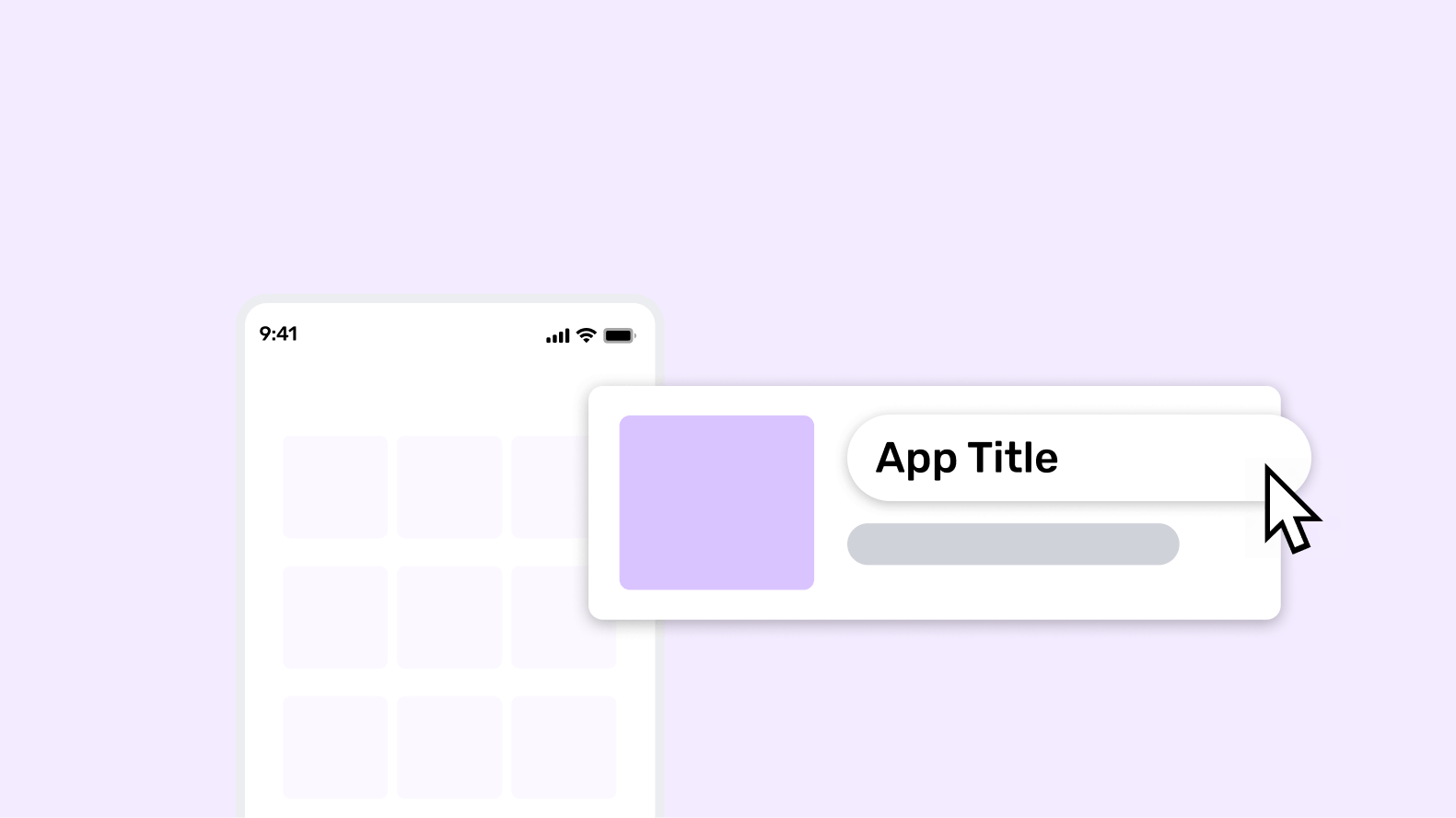
Imagine if the title of this blog was “The one thing most people forget to do with their mobile apps”.
Sure, if you discovered it via a display ad, you might click on it, because it creates some intrigue. But you’d never discover it through a search engine.
You know why?
Because there’s no specific keyword in it. Just by looking at this title, it’s impossible to know what this blog is about without clicking. That makes it hard for people and search engines to understand what they’re looking at.
So before you choose a title for your app on the Google Play Store or the Apple App Store, use an ASO tool to find a suitable keyword for your title with plenty of traffic. Ideally, keep it to under 30 characters. Then stick with it.
Constant chopping and changing of your app title will make it hard for you to grow awareness of your brand.
Top tip
Don’t add your brand name, category name or the word “app” as keywords as these are automatically included in the Apple App Store. Meanwhile, on the Google Play Store, there’s no keyword section as Google picks them up automatically.
Step 2 - Craft your short description
Writing a short description is the next thing on your to-do list.
While Google Play allows you 80 characters to communicate your app’s biggest features and benefits, the Apple App Store has a 45-character limit.
So being direct and concise is the name of the game here.
Including relevant keywords will also help Apple and Google to index your app store listings, but stuffing them won’t benefit your users.
Step 3 - Write your long description
Long descriptions give you more leeway to include keywords and explain exactly how you can deliver the benefits you promise in a natural way.
That’s because there’s a 4,000-character (around 500 words) limit. But don’t waste it on waffle.
Adopting the inverted pyramid formula (used by journalists who put the most interesting parts of the story upfront), will make sure that you prioritise important information first, details second and general or background information last.
A call to action (CTA) to download your app at the end will also remind the most committed readers why they’re there in the first place.
Top tip
Long-tail keywords, which have higher conversion potential and lower search volumes are ideal to include here.
Step 4 - Take screenshots
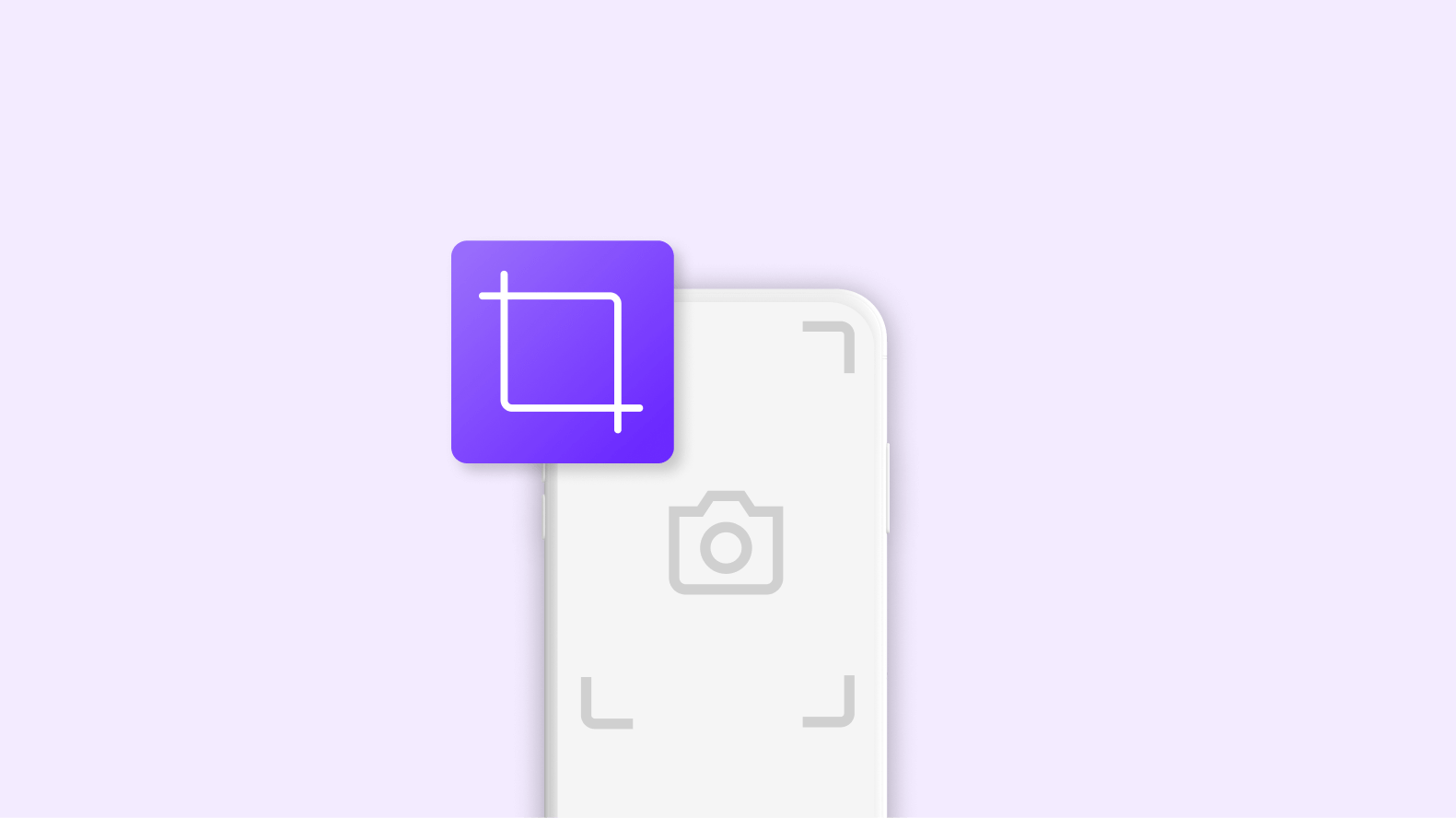
A study by Store Maven revealed that making a good impression on your chosen app store can increase your conversion rate by 35%.
And screenshots are a key part of this.
Again, it comes down to communicating the biggest advantages you can deliver to your audience as succinctly as possible. To max out the potential user base of your app, be sure to include screenshots optimized for different devices and orientations.
Both the Apple App Store and Google Play Store have their own screenshot guidelines that you need to follow.
But generally, you should follow these best practices to create outstanding screenshots:
Use high-quality images
Make sure that your app screenshots are top-notch quality and pixel-perfect. Use only high-resolution images that showcase your app's features and user interface in the best possible light.
Choose contrasting colours
Pick colours that contrast well with each other to make your screenshots stand out. Avoid using too many similar colours, as this can create a cluttered and confusing look.
Stick to portrait
While creating screenshots for app stores, you may face the dilemma of whether to create portrait or landscape screenshots. The rule of thumb says it’s always better to stick to portrait orientation. This is because portrait screenshots are much easier to scan and a user can see two screenshots at a time.
However, if your app is to be used in landscape orientation, like in gaming apps, then it’s better to create horizontal screenshots.
Make them fun
Add personality to your screenshots to make them fun and attractive. You can do this by throwing in some vibrant colours and playful graphics.
Making your screenshots look unique and fun is inviting to users, which gives your app one more reason to be downloaded.
Tell a story
Use your app screenshots to narrate a story. You can do this by creating a flow that progresses logically from one screenshot to the next.
By doing this, you can illustrate the journey users will experience in your app and, at the same time, demonstrate the value of your app along the way.
Step 5 - Record an app preview video
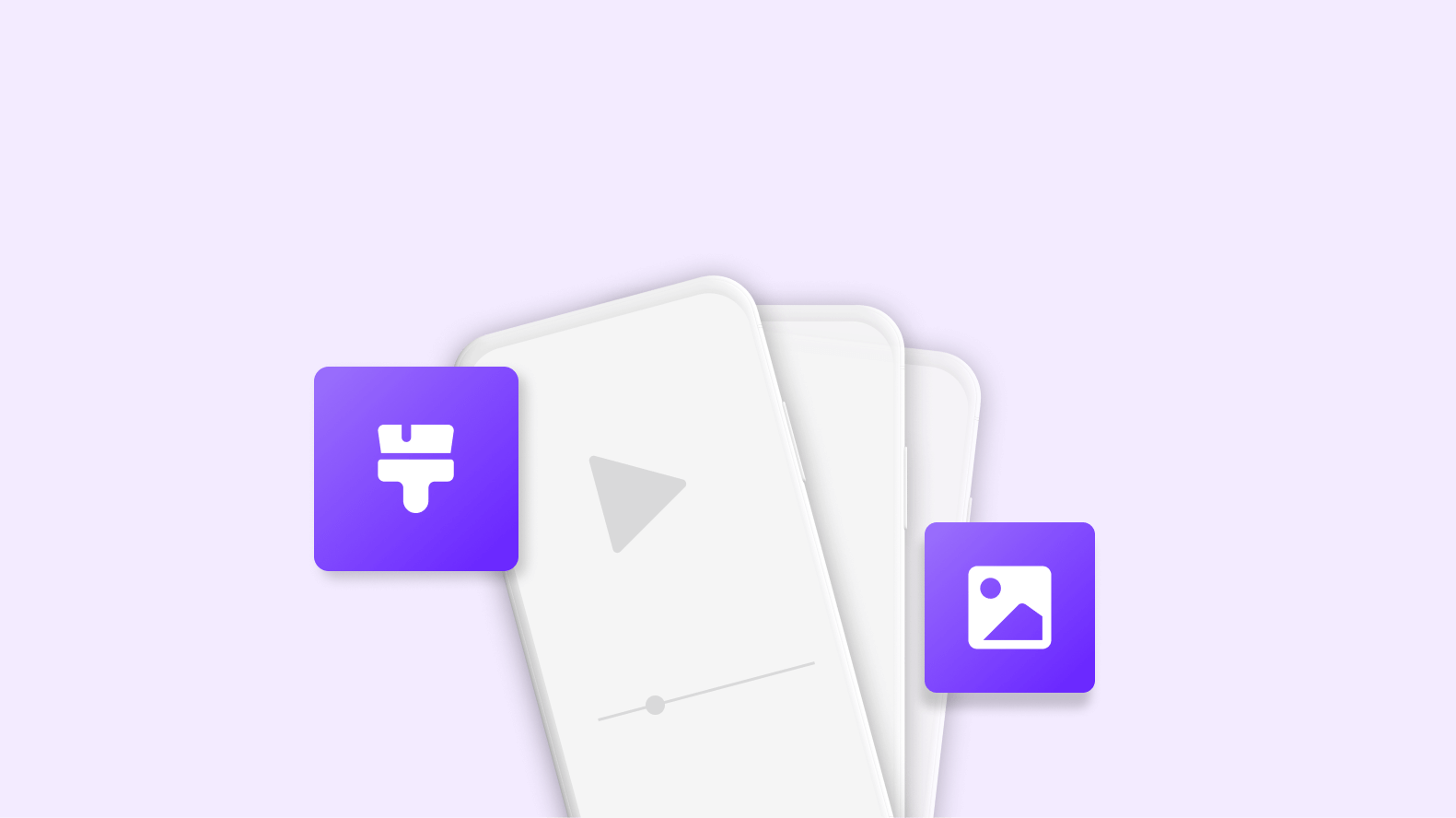
App preview videos help bring your app to life and enhance your app descriptions and screenshots. In fact, mobile apps listed on the Apple App Store may even rank higher simply by including one.
Also, as one of the first things your potential users see, it’s crucial to create a video that entices users to click through and download.
Rather than simply explaining key features and benefits, though, your preview video should also give users an idea of the look and feel of your app.
This is also a great time to call out your value propositions. In other words, things you can offer that your competitors can’t.
Both Apple and Google have different app preview video guidelines that you need to follow. However, there are certain things you should do to make great app preview videos:
Start with a strong hook
Today, people’s attention spans have become shorter, dropping from 150 seconds twenty years ago to 45 seconds today.
You need to deliver instant information to keep them engaged for longer. This is why it’s crucial for you to start your App Store preview video with a strong hook.
Show your actual app
It’s important to stick to showing your actual app than marketing footage because, as per Apple's App Store guidelines, showing anything other than the app screen recording to the preview video will get your app rejected.
Other than that, showing your actual app in the preview video helps people to see exactly what your app does and how it works, which makes it easier for them to understand your app’s value.
Highlight unique features
The App Store has hundreds of apps capable of solving most problems. Therefore, your preview video should focus on highlighting how your app solves those problems uniquely.
Begin by identifying the unique selling points of your app that set it apart from competitors. By doing this, you spark the curiosity of your potential users and make them want to download your app
Keep it short and sweet
No one wants to sit through a long video only to lose their interest before pressing the download button. That’s why it’s recommended to keep your app preview videos short and sweet.
By keeping your video brief, you not only get your message across quickly but also increase the chances of users taking action. You can do this by editing out unnecessary footage, which lengthens your preview video.
Step 6 - Select categories and tags
Imagine how you’d feel if someone told you to go to Starbucks to buy boxer shorts. Confused, right?
That’s why choosing the right product categories and tags is so important.
For users to find your app, you need your chosen app store to understand as much as possible about it. On the Google Play Store, for example, you have a maximum of 5 tags to choose from, with the company providing examples of which you might want to choose for your app.
Where the Apple App Store is concerned, you can choose a primary and a secondary category. Apple advises that you should select the former by deciding:
- Your app’s purpose
- Where users naturally look for an app like yours
- Which categories contain the same type of app as yours
The secondary category is less important but will still help App Store Search accurately list your app.
Step 7 - Localise your app
When it comes to localising your app, you need to think about more than just translation. That’s because the cultural context is equally important.
In different territories, for example, a playful tone of voice may be perceived as desirable or inappropriate. Red colour schemes may be interpreted as alarming or exciting. And so on.
As a result, a one-size-fits-all approach is unlikely to bear fruit.
Instead, you should evaluate your audience’s requirements in each of your chosen territories and add localised graphic assets.
Step 8 - Compile ratings and reviews
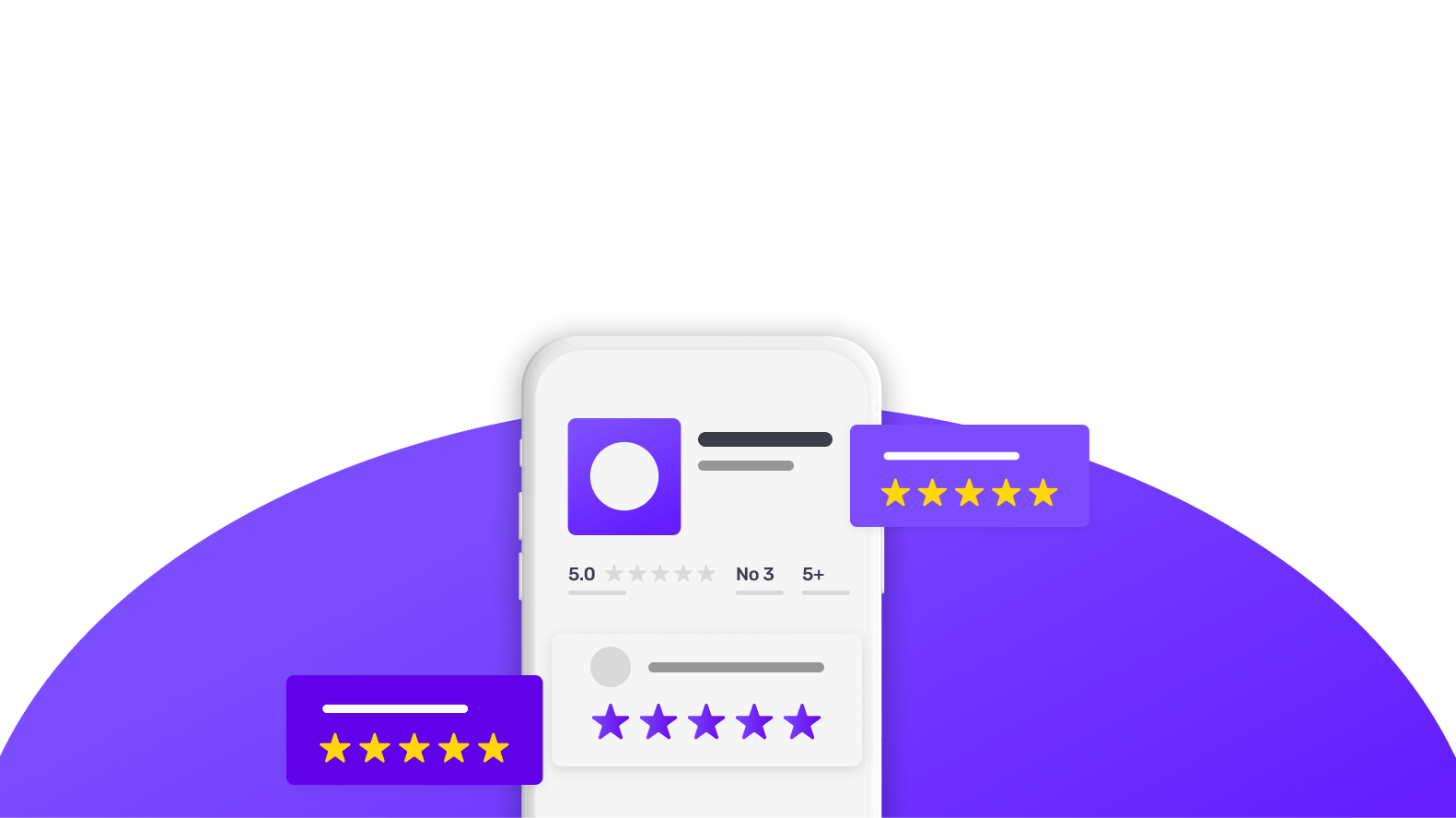
If you cast your mind back to the first section, you’ll remember how much Holly Lawton emphasised the importance of positive app ratings and reviews to ASO.
And the stats back her up. Apptentive’s research, for example, shows that 50% of users won’t even consider downloading something with a 3-star rating. The study also states that the average app rating across all categories is 4.3 out of 5.
If your app has low ratings, it’s less likely to appear in the app store search results. This is because the app store algorithms prioritise apps with higher ratings and better user reviews.
This leads to your app experiencing lower conversion rates and, hence, fewer organic installs. However, there are strategies to improve your app store ratings and get positive reviews.
Have a user-focused approach
No amount of shortcuts can outperform a genuine effort to help users solve their problems. Taking a user-focused approach ensures that your users get value out of your app and have a seamless experience along the way.
When you start listening to your users and giving them exactly what they need, they’re more likely to give your app a big thumbs up.
Simply ask
Don’t underestimate the power of simply asking. Sometimes your users need a little push to express their thoughts.
Although negative sentiments encourage users to leave a bad review, positive ones need a little nudge. You never know that by simply asking to leave a review, you may receive a tonne of positive reviews.
Time your triggers
Your app shouldn’t trigger review prompts at random intervals. You need to strategically time the request and try catching users at moments when they’re likely to drop positive feedback.
For instance, in a food delivery app, if your user receives the food ahead of schedule, your app should prompt them for a rating or a review. This is because at that moment they’re likely feeling positive and you have a good chance of receiving a positive rating.
Incentivise users to leave ratings
Depending on the type of app you have, you can offer users rewards, discounts or exclusive content in exchange for leaving a review.
For instance, you can give your users access to premium features for a month if they write a review. This strategy tips the scale in favour of satisfied users who were already looking to leave a review.
A pro tip would be to avoid offering incentives for only positive app reviews, as this will undermine the credibility of your app ratings.
Directly reply to all reviews
Providing prompt replies to users’ reviews, no matter whether negative or positive, is guaranteed to get your app higher ratings.
For negative reviews, if you acknowledge their concerns and provide genuine feedback, they’re more likely to change their initial ratings to higher ones. On the other hand, responding to positive reviews can encourage further engagement from your users.
Avoid poor performance
Poor performance is one of the most common reasons for negative reviews. If your app crashes frequently, freezes or is slow to load, users will be frustrated and more likely to leave a negative review.
To avoid this, you need to maintain your app regularly to resolve bugs and glitches that slow down your app and make sure your app runs smoothly.
Add more features
A common complaint you might come across is that your app lacks features that your users expect. This could include anything from basic features like push notifications to more advanced features like the ability to create custom reports.
You need to keep updating your app with new features and functionalities. This keeps them engaged for longer and, at the same time, invites positive reviews.
Step 9 - Run experiments
You know what the worst ASO mistake you could make is?
Assuming that it’s a set-and-forget activity. That’s because optimization is an iterative process.
And you can only work out what works best by comparing different variants of, say, the screenshots, short descriptions and videos you use.
The best way to do this is through A/B or split testing, which shows two variants of your app listing at random. Once the duration of the test is complete, you can review which variant produces the best results and make it your permanent offering.
Step 10 - Ensure your app is high-quality
As we mentioned in Step 8, you can’t do good ASO without a high-quality app.
In fact, you can bet your bottom dollar that crisp preview video and screenshots won’t save you from a one-star review if a user can’t log in.
That’s why choosing howyou create your app is so crucial.
No-code app builders are one option. Hiring app developers or an agency is another. But Builder.ai is the only one that combines the main benefits of the two.
To learn more about how you can build a scalable app for a fixed cost, check out Studio Store 👈
Step 11 - Engage with your customers
Although this may shock you, ratings and reviews aren’t always bile and vitriol.
So when you receive constructive criticism, be sure to feed it into app development and improve user experience (UX).
As you do this, you’ll be able to gain more users by receiving better reviews. Meanwhile, you’ll also be able to retain users much more easily.
App Store optimization best practices
Before we speak about the technical elements of ASO, it’s important to get the basics right. Anyone who wants to be successful with ASO needs to do the following groundwork 👇
Customer research
Knowing exactly who you’re selling to is the foundation of any marketing activity. And ASO is no different.
So before you can optimize for downloads and conversions, you need to create buyer personas.
These should cover the key challenges, motivations and ambitions your perfect customer has, allowing you to create messaging that aligns with their needs.
Competitor research
Peeking on your competitors’ app store listings is essential.
That’s because by looking at their reviews, you can see what customers like and dislike about their apps and verify them by downloading the app itself.
As a result, you can create titles, write descriptions and create promo videos that highlight your strengths and play on their weaknesses.
Keyword research
Keyword research serves as the backbone of your App Store optimization efforts. If done correctly, it helps you understand what your users are searching for so you can fine-tune your app’s visibility.
For keyword research, you need to do market and competitor research and compile and analyse them. You can also use keyword research tools to come up with ideas.
To do it effectively, you should look for words and phrases that perfectly match your app’s features.
For instance, if you have a fitness tracking app, exploring the term "workout" could reveal numerous keyword variations like "workout planner" or "exercise tracker." You can also opt for less popular keywords like “fitness buddy and tracker” for increased visibility.
This is because you have a better chance of ranking for low-volume keywords and because they're often high intent, they give you a better chance of converting.
You need to strategically combine and balance a mixture of high and low volume keywords so you can improve the visibility of your brand while simultaneously getting conversions.
Deep linking
Deep linking is when you link your app to external sources like your website. This allows your users to easily transition from browsing your website to downloading your app.
This seamless transition enhances the overall customer experience and makes it convenient for your users to access your app without friction.
Deep linking can have a substantial impact on your organic app downloads and can increase your conversion rates by 70%.
Use ASO tools
There are many tools available in the market that can help you streamline your ASO process. Some of the popular ones include:
- Keyword research - Sensor Tower, Google Keyword Planner
- Competitor research - App Annie, Mobile Action
- A/B testing - Splitmetrics, StoreMaven
- Performance tracking - ASOTools, App Ranking
Regularly update app
Regularly updating and maintaining your app is essential for successful app store optimization.
By frequently addressing your app’s bug fixes and adding new app features you keep your audience engaged and deliver a seamless user experience (UX).
Additionally, responding to user feedback helps you garner positive reviews and ratings, making your app soar in the app store search results.
How long does it take for app store optimization to work?
As we explored in the first section, there are some similarities between ASO and SEO. But does that mean the former is as much of a long-term play as the latter?
Max Loel, Senior Strategic Coordinator at Gummicube, clarifies this in a Quora post, covering:
- How long each deployment takes to index and return updated rankings
- How A/B testing differs on the Apple App Store and the Google Play Store
- How to continue optimizing an app for the Apple App Store and the Google Play Store
1 - Indexation
Max says:
"Apple indexes an app after each update, which should be done approximately every four weeks to prevent stagnation [...] This indexation process can take three to four weeks to complete, hence why it is recommended to allow a full month for a keyword update to index before submitting another update."
He then explains the differences between indexation on the Google Play Store and the App Store:
"On the Google Play Store, there is no declared keyword bank. Instead, Google's algorithm indexes an app's public facing metadata [...] This process can take a bit longer than on the Apple iOS App Store, up to 45 days and sometimes longer, particularly for new apps."
2 - A/B testing
On A/B testing, Max explores the key methods you can use to evaluate the performance of your listings. On the Apple App Store, the assets you should test include icons, screenshots and preview videos. On the Google Play Store, you should test icons, screenshots, feature graphics and promo videos:
"A/B testing can be done in a number of ways on each platform. The Google Play Store has a built-in testing tool in the form of Google Play Store Listing Experiments. The Apple iOS App Store historically had no native testing tools."
As a result, Max says app owners and developers need to think outside the box.
“Create alternate store listings with different creative assets, and divert a percentage of traffic to these alternate listings. The test variants (alternate listings) are compared against the control (default listing to measure conversion success. Whichever option is driving the most conversions may be selected to replace the default listing."
Max also urges you not to introduce too many variables when testing and to be patient. Tests should run for a maximum of 30 days and results may become clear at any time during this period.
3 - Optimizing over time
Finally, Max emphasises that ASO is an ongoing process:
"While you'll start to see improvements in visibility, ranking and conversion within 30 days of your first optimization, this doesn't mean the process is one-and-done.
"Revisiting your ASO strategy from the top after indexation occurs to assess changes in metrics such as conversion rate, click-through rate, as well as app store ranking and overall visibility will keep your app's metadata and creatives from becoming stagnant and outdated."
Conclusion
For the difference app store optimization can make to your business, it’s well worth the time investment. Especially when most of the ranking factors are firmly in your control.
But remember:
It’s a pointless exercise if you’re marketing a low-quality app that users will hate. To ensure that doesn’t happen, create a robust and scalable app with Studio Store 👈
Want to start your app project with us?
Book a demoSpeak with one of our product experts today.
By proceeding you agree to Builder.ai’s privacy policy and terms and conditions

Laura McAllister is a seasoned Productologist at Builder.ai, specializing as a Product Owner. Her expertise lies in spearheading the successful launch of multiple apps and websites for growing businesses and startups. With a keen eye for detail and a knack for translating client visions into reality, Laura consistently delivers innovative solutions that drive tangible results.

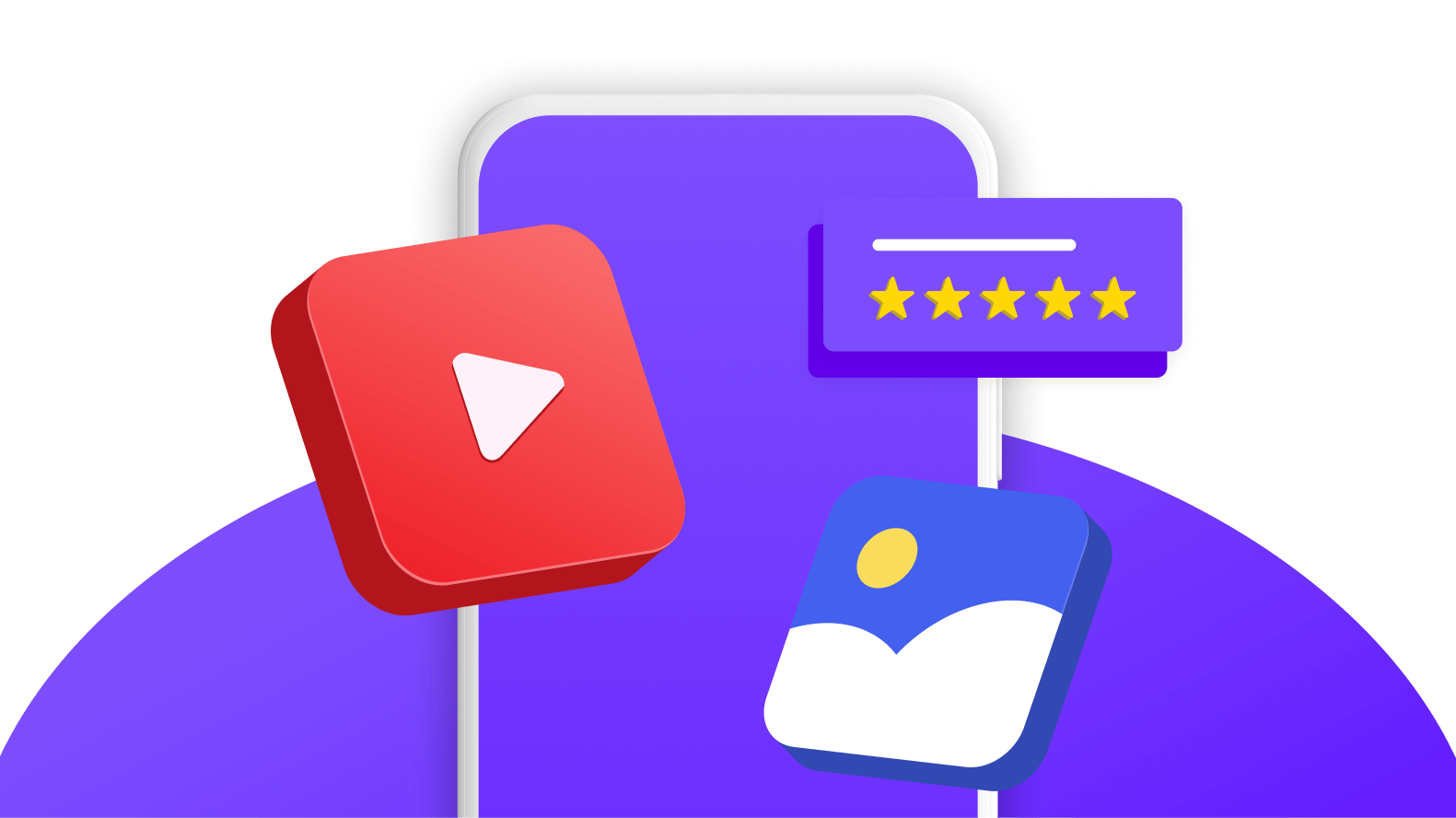

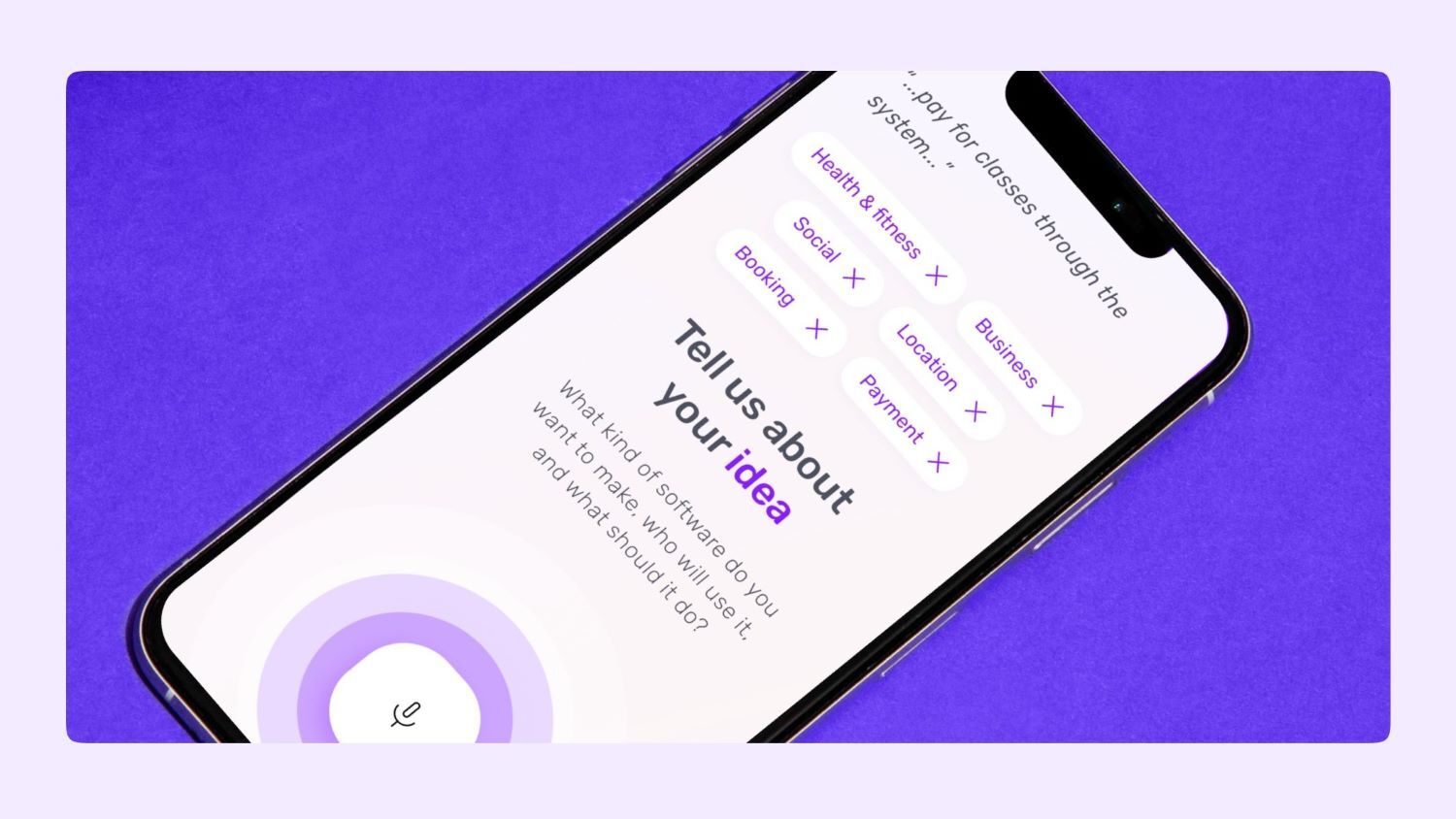
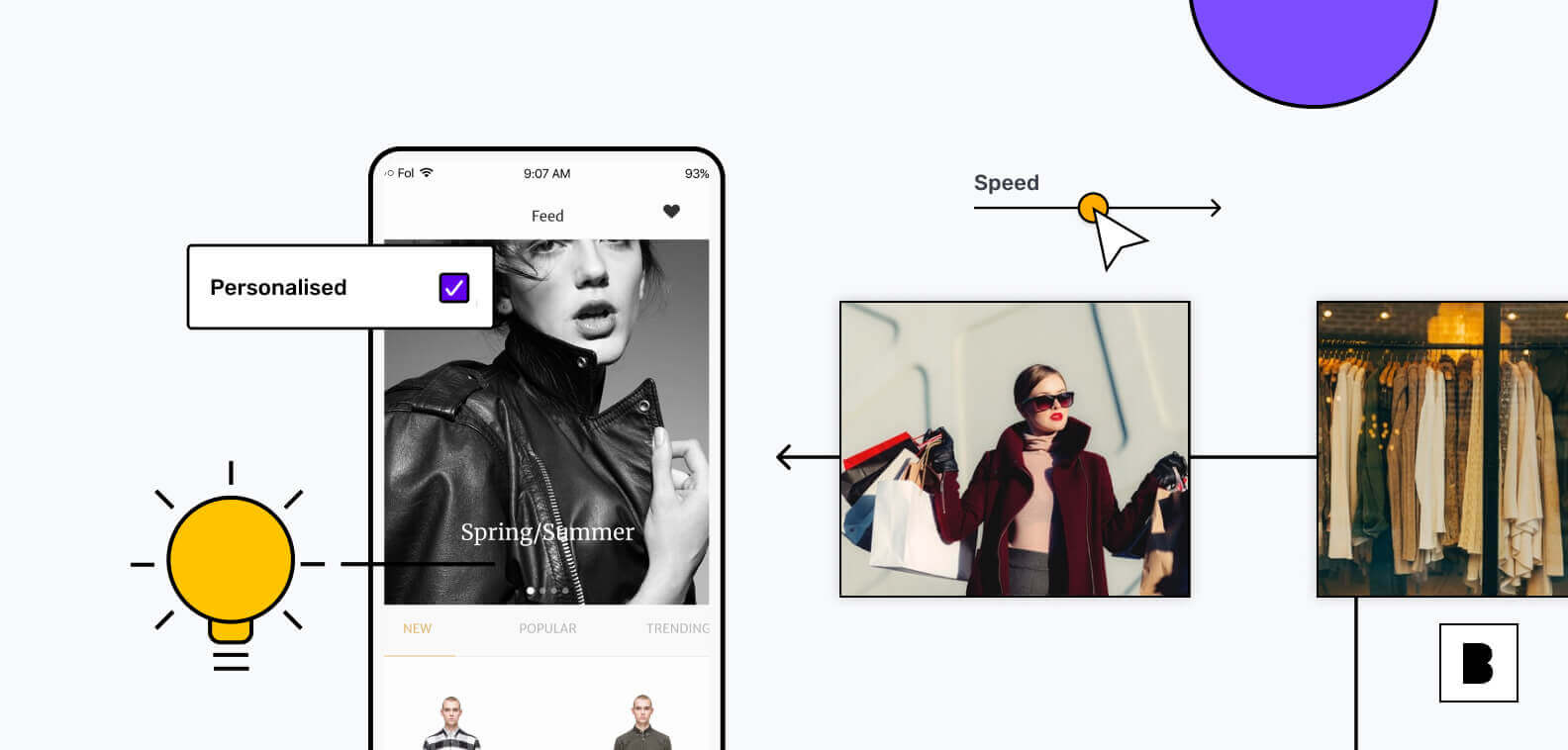








 Facebook
Facebook X
X LinkedIn
LinkedIn YouTube
YouTube Instagram
Instagram RSS
RSS


